World Lung Cancer Day
Respiratory groups stress lung cancer risks and importance of early screening and treatment
Tokyo, 1 August 2020
In support of World Lung Cancer Day, the Forum of International Respiratory Societies (FIRS), of which the APSR is a founding member, calls for more awareness and understanding of lung cancer risk factors, as well as the importance of early screening and treatment.
Lung cancer is responsible for nearly 1 in 5 cancer deaths according to the World Health Organization. While lung cancer and breast cancer are diagnosed at the same rate (11.6 percent), lung cancer kills more people yearly than breast, colon and prostate cancers combined. Lung cancer mortality is projected to reach 2.45 million by 2030, a 39 percent increase in just over a decade.
While most understand that smoking is the single greatest risk factor for lung cancer at 80 percent of all cases, other lesser known risk factors include the environment and genetics. Environmental exposure to radon, asbestos, arsenic, beryllium and uranium has been linked to lung cancer. The risk of lung cancer also increases with a history of cancer in another part of the body, age, family history, radiation to the chest area and lung diseases like chronic obstructive pulmonary disease (COPD).
Access to screening options and education is vital for early detection and treatment. Low-income countries, where survival rates are significantly below the average, report only a 15 percent availability of treatment through public health systems. More that 90 percent of high-income countries report vital access to care.
Lung cancer symptoms include change in mucus, chest or back pain, coughing up blood and difficulty swallowing. Tests that may be used to diagnose lung cancer include chest x-rays, CT and PET scans, bronchoscopy and needle biopsies. If you are a current or former smoker and over the age of 55, you may be a candidate for a low-dose CT scan screening that can potentially detect lung cancer in its earliest stages.
Lung cancer in Asia is more common in never smokers, women, with higher chance of having specific mutations such as EGFR mutations which can be treated by targeted therapies.
About the Forum of International Respiratory Societies (FIRS)
Click any of the images above to enlarge (poster size) and copy for your activities.
You can also click any of the blank templates below for creating posters with your own message. Feel free to add your society logo at the bottom.
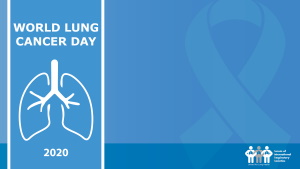 |
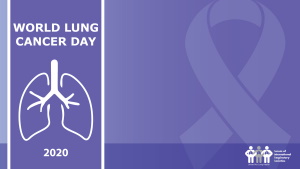 |
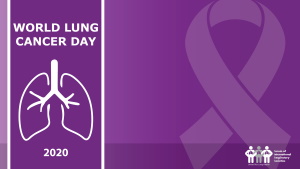 |
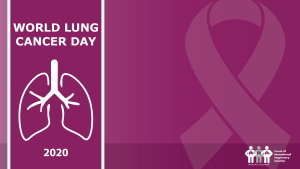 |
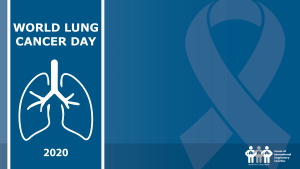 |
Lung Cancer 2020 Fact Sheet
Lung cancer: the most fatal cancer
- The most frequently diagnosed cancer is lung cancer (11.6 percent), followed by female breast (11.6 percent) and colorectal cancers (10.2 percent).
- Worldwide lung cancer incidents are on track to increase by 38 percent to 2.89 million by 2030.
- Lung cancer is the leading cause of death from cancer at 1.74 million (18.4 percent), followed by colorectal (9.2 percent) and stomach cancers (8.2 percent).
- Lung cancer deaths exceed breast cancer mortality for women in 28 countries.
- Lung cancer mortality is projected to reach 2.45 million worldwide by 2030, a 39 percent increase since 2018.
- About 80 percent of lung cancer deaths are as a result of smoking tobacco. Smokers exposed to other known risk factors such as radon and asbestos are at an even higher risk.
- For men, lung cancer is the most prevalent form of cancer, it is third for women.
- The five-year cancer survival rate in middle-income countries for all types of lung cancer (19 percent) is lower than many other leading cancer sites, such as the colon (71 percent), breast (85 percent) and prostate (98.9 percent).
Treating lung cancer
- In lower-income countries, access to care and cost-effective treatments can reduce the human burden and societal impact of lung cancer.
- Screening with CT scans compared with chest radiography resulted in a 20 percent reduction in lung cancer-specific deaths, but much cheaper and more accessible methods are needed for low-income settings.
- Early-stage lung cancer is treated with curative-intent surgery or radiation therapy.
- Selective patients may benefit from chemotherapy after surgical resection, while patients with local advanced disease may benefit from concurrent chemo-radiotherapy with or without surgery.
- Although advanced stage lung cancer is not curable, many patients may have symptom improvement and survival prolongation by effective treatment.
- Molecular-targeted therapy against epidermal growth factor receptor (EGFR) mutations and anaplastic lymphoma kinase (ALK) re-arrangements attain tumor response rates of around 70 percent.




